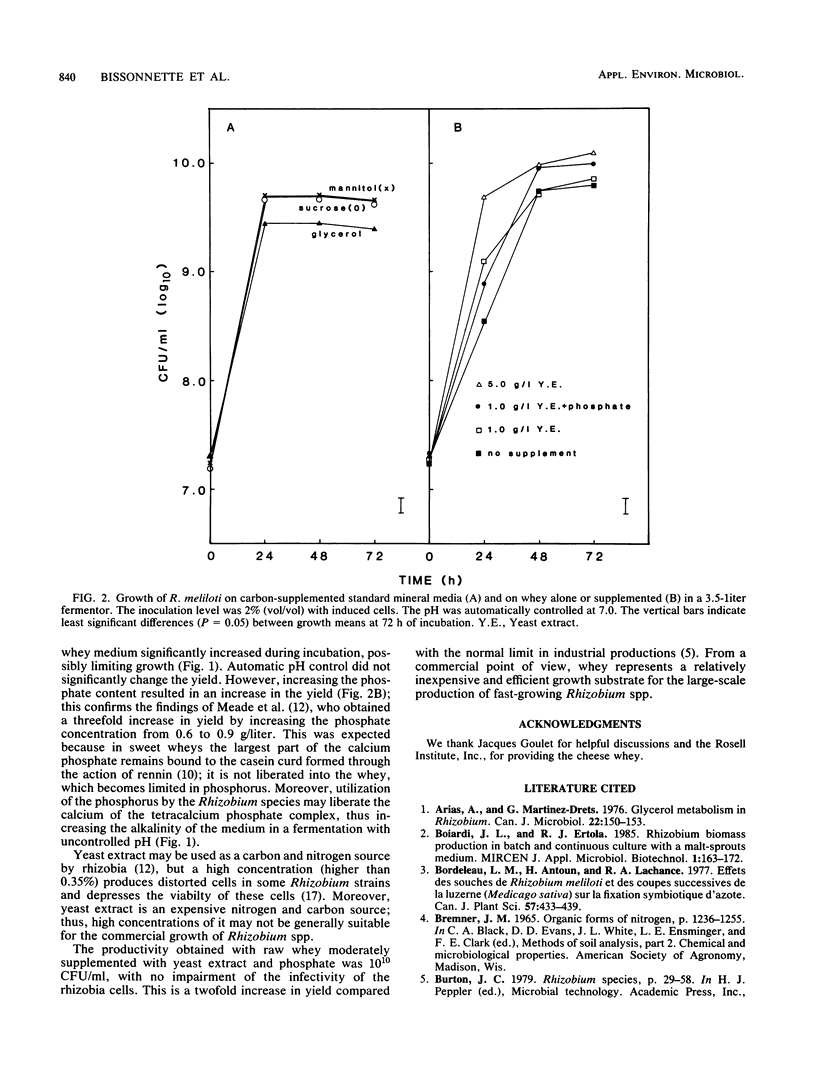Abstract
Whey, a by-product of the cheese industry, can sustain the growth of fast-growing rhizobia. To avoid any latency of growth, rhizobial inoculum must be prepared under inducing conditions. In unsupplemented whey, the number of cells of Rhizobium meliloti Balsac reached 5 × 109 CFU/ml in 48 h of incubation. This is comparable to the yield obtained with yeast-mannitol broth, the standard medium for the growth of rhizobia. In raw whey supplemented with yeast extract (1.0 g/liter) and phosphate (0.5 g/liter), the number of cells reached 1010 CFU/ml in 48 h of incubation. This is a twofold increase compared with the population normally obtained in industrial production. Whey represents a relatively inexpensive and efficient substrate medium for the large-scale production of fast-growing rhizobia.
Full text
PDF



Selected References
These references are in PubMed. This may not be the complete list of references from this article.
- Arias A., Martinez-Drets G. Glycerol metabolism in Rhizobium. Can J Microbiol. 1976 Feb;22(2):150–153. doi: 10.1139/m76-020. [DOI] [PubMed] [Google Scholar]
- Sherwood M. T. Improved synthetic medium for the growth of Rhizobium. J Appl Bacteriol. 1970 Dec;33(4):708–713. doi: 10.1111/j.1365-2672.1970.tb02253.x. [DOI] [PubMed] [Google Scholar]
- Stowers M. D. Carbon metabolism in Rhizobium species. Annu Rev Microbiol. 1985;39:89–108. doi: 10.1146/annurev.mi.39.100185.000513. [DOI] [PubMed] [Google Scholar]


